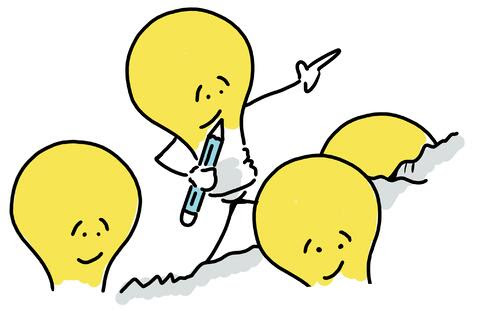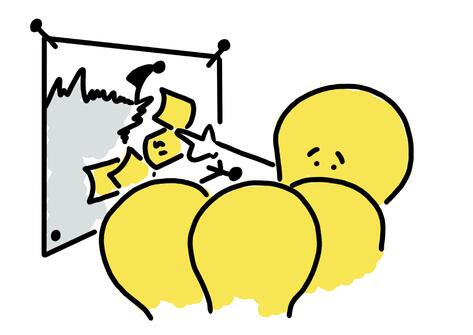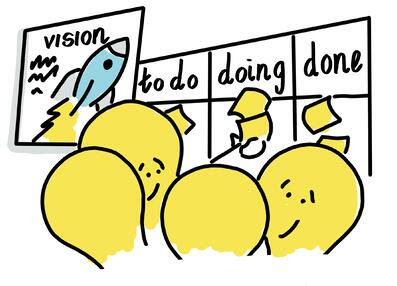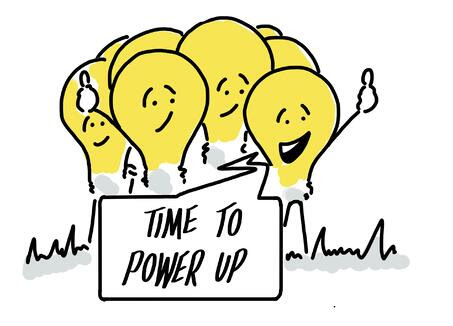Investing in the Right Skills to Lead Your Organization to Success, Are Power Skills the New Soft Skills?
Since the 1980s we have experienced a digital revolution. It’s been an age of disruption where technology is a leading factor in the survival of all businesses. Until now, organizations striving for continuous improvement have benefited by investing heavily in a workforce with strong technological skills, or so called ‘hard skills,’ but is this enough?
A recent article from Forbes suggests that businesses are reassessing the skills they deem critical. Mark Cuban (American businessman and investor) predicted that, “In ten years, a liberal arts degree in philosophy will be worth more than a traditional programming degree. AI and automation will substantially transform the job market so that degrees that teach people how to think in a big picture way and better collaborate will become more valuable.”
Cuban’s prediction waves the flag for softer skills. Skills that we at Cprime deem essential and a topic worth exploring. Let’s discuss how these skills really assist an organization wishing to transform, innovate and deliver value faster.
What are ‘Hard’ and ‘Soft’ Skills?
Let’s begin by defining this set of skills. Unlike technical or ‘hard’ skills, ‘soft’ skills are less about knowledge and more about the behaviors you present in different situations. Most companies are focusing on behaviors as the key to transformation–behaviors like collaboration, creativity, and emotional intelligence (EI).
This set of skills is critical. In an insightful article in Hackernoon, Azeem Azhar described how misleading the labeling of ‘hard’ and ‘soft’ skills really is. Hard skills are actually the easy ones to grasp; you can wrap your head around them. “I’d propose a rebrand,” suggests Azeem, “‘Soft’ is the wrong modifier. These not-hard skills are actually the skills that we most need as individuals, at home and in the workplace. I’d go for ‘Power Skills.’”
Are visual thinking and creativity power skills?
It will be no surprise to those who know me that I’m a strong advocate for assisting individuals to power up their power skills. Visualization can assist with this through team collaboration, communication, problem solving, and idea generation. Don’t just take my word for it. In the academic study What We See and Why It Matters, Anneliese Tillmann shares insights from multiple sources on the importance of visual literacy. “When children are first introduced to literature, it is often in the form of picture books. Children learn to associate the pictures with meaning because they cannot read the words on the page (O’Neil, 2011).” So visual thinking and creativity power skills are less about the ability to pick up a sharpie and doodle, and more about the ability to analyze, explore, and critique visual information to be effective in visual communication.
So visualization is an effective way to gain understanding and tackle problem solving. And it also aids innovation. An organization wishing to embrace an innovation mindset doesn’t need to invest in a trendy innovation lab equipped with bean bags, ball-pits, and beer fridges. It needs to foster an appetite for experimentation, ideation, and fast learning. Simple visualization/low-fidelity prototyping techniques will greatly assist a team to gain a deep-rooted understanding of customer needs and test/validate design ideas quickly and effectively. Oh and just to clarify in case you aren’t keeping up with my rambling, I’m still talking about power skills, not hard skills.
So how do these power skills really enable a successful organizational transformation?
Transformation is all about changing the way people think and act. This can be tricky because people are complex. People are not computer programs that we can easily ‘hack.’ We can bring in new systems and products but it’s people that implement and use them. It’s people who bring creative ideas that enable companies to compete in today’s market.
So how easy is it to change people’s behaviors, how can we bring about more creativity and innovation?
It’s not that easy at all, but it is absolutely possible. People innately have the ability to change. We can adapt, think differently, and be creative. The fundamental mistake organizations make is to assume people don’t have these abilities and we have to teach them or hire people with them. What we need to focus on is creating a collaborative, creative environment that empowers people. Many traditional organizations are not built like this, though. They run on hierarchy and micro management. Transformational leaders are essential in creating an environment where people can innovate, create, and feel engaged in change. Visualizing strategy and using stories is a highly effective way to get people to understand and feel motivated to be part of something exciting–it’s what we are introduced to from an early age.
What does a creative environment look like?
To get from idea to innovation takes creativity, and creativity is in the hands of individuals and teams. A creative environment should be where visualization is embraced throughout the fruition of a product lifecycle: during ideation sessions, retrospectives, and show and tells to name a few. Agile teams need to bake in time for innovation activities and fun. And they shouldn’t seek to improve their creativity power skills in a Sunday painting class, but through the courageous practice of collaborative drawing. Remember process over art, communication over decoration, and simplicity is key.
What’s the link between power skills and creating this environment?
Business leaders have the challenge of helping people feel safe to flex their own power skills and try something new without knowing whether it will work. Coaching is a key power skill that can encourage self development and learning. Leaders also need to understand what their strengths and weaknesses are and be aware of blindspots that may be holding them back or affecting others. So we come to another power skill – Emotional Intelligence.
What exactly is emotional intelligence and is it hard wired or learned?
This is a long standing debate… the old ‘nature vs nurture’ discussion. Here is my very very very short answer:
Roughly 3,000 articles have been published on EI, since the concept was introduced in the 90s. EI is also referred to as ‘EQ’–like the emotional version of ‘IQ’. Evidence shows that our level of EQ is not entirely rigid, but our ability to identify and manage our own and others’ emotions is relatively stable. What this means is that improvements will require a significant personal investment and lots of support. Power skills, like coaching, are essential to developing EQ and many executive and leadership development programs will incorporate this. EQ is essential for leaders transforming teams and organizations, which includes elements of self awareness.
In Summary
- Regardless of method or practice, power skills are critical.
- Power skills can be enhanced through experiential learning and team collaboration.
- Organizations should invest in people with the right skills and coach them to develop these skills.
- Creating the right culture is key to helping people power up and be creative.
- Leaders will need to invest time in refining their own power skills and helping their teams do the same.








